
Alessandro di Cristofano di Lorenzo del Bronzino Allori was an Italian painter of the late Mannerist Florentine school.

Michelangelo di Lodovico Buonarroti Simoni, known as Michelangelo, was an Italian sculptor, painter, architect, and poet of the High Renaissance. Born in the Republic of Florence, his work was inspired by models from classical antiquity and had a lasting influence on Western art. Michelangelo's creative abilities and mastery in a range of artistic arenas define him as an archetypal Renaissance man, along with his rival and elder contemporary, Leonardo da Vinci. Given the sheer volume of surviving correspondence, sketches, and reminiscences, Michelangelo is one of the best-documented artists of the 16th century. He was lauded by contemporary biographers as the most accomplished artist of his era.
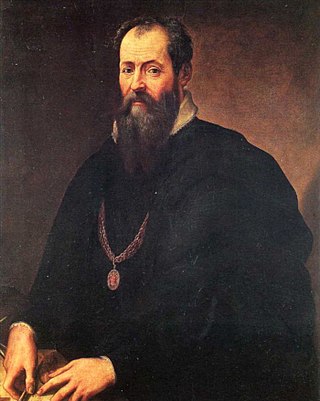
Giorgio Vasari was an Italian Renaissance Master, who worked as a painter, architect, engineer, writer, and historian, who is best known for his work The Lives of the Most Excellent Painters, Sculptors, and Architects, considered the ideological foundation of all art-historical writing, and the basis for biographies of several Renaissance artists, including Leonardo da Vinci and Michelangelo. Vasari designed the Tomb of Michelangelo in the Basilica of Santa Croce, Florence that was completed in 1578. Based on Vasari's text in print about Giotto's new manner of painting as a rinascita (rebirth), author Jules Michelet in his Histoire de France (1835) suggested adoption of Vasari's concept, using the term Renaissance to distinguish the cultural change. The term was adopted thereafter in historiography and still is in use today.

Giuseppe Cesari was an Italian Mannerist painter, also named Il Giuseppino and called Cavaliere d'Arpino, because he was created Cavaliere di Cristo by his patron Pope Clement VIII. He was much patronized in Rome by both Clement and Sixtus V. He was the chief of the studio in which Caravaggio trained upon the younger painter's arrival in Rome.

Sebastiano del Piombo was an Italian painter of the High Renaissance and early Mannerist periods famous as the only major artist of the period to combine the colouring of the Venetian school in which he was trained with the monumental forms of the Roman school. He belongs both to the painting school of his native city, Venice, where he made significant contributions before he left for Rome in 1511, and that of Rome, where he stayed for the rest of his life, and whose style he thoroughly adopted.

The Basilica of St. Mary of the Angels and of the Martyrs is a basilica and titular church in Rome, Italy, built inside the ruined frigidarium of the Roman Baths of Diocletian in the Piazza della Repubblica.
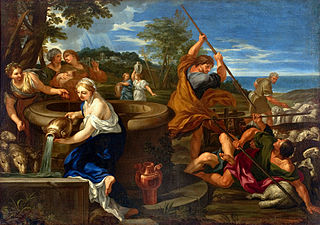
Ciro Ferri was an Italian Baroque sculptor and painter, the chief pupil and successor of Pietro da Cortona.

Bastiano da Sangallo was an Italian sculptor, painter and architect of the Renaissance period, active mainly in Tuscany. He was a nephew of Giuliano da Sangallo and Antonio da Sangallo the Elder. He is usually known as Aristotile, a nickname he received from his air of sententious gravity. He was at first a pupil of Perugino, but afterwards became a follower of Michelangelo. Sangallo was mentioned by Vasari as one who made a small copy of the Cartoon of Michelangelo's Battle of Cascina (1506).
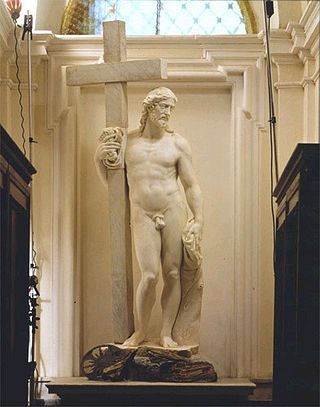
The Risen Christ, Cristo della Minerva in Italian, also known as Christ the Redeemer or Christ Carrying the Cross, is a marble sculpture by the Italy High Renaissance master Michelangelo, finished in 1521. It is in the church of Santa Maria sopra Minerva in Rome, to the left of the main altar.
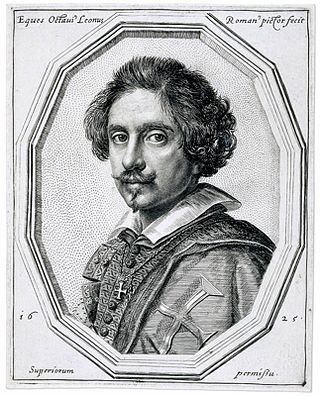
Ottavio Leoni was an Italian painter and printmaker of the early-Baroque, active mainly in Rome.

Giovanni Francesco Romanelli was a major Italian painter of the Baroque period, celebrated for his use of bright, vivid colors and also for his clarity of detail. Many of his works are on display in the Louvre.

Marcello Venusti was an Italian Mannerist painter active in Rome in the mid-16th century.

Francesco Curradi or Currado was an Italian painter of the style described as Counter-Maniera or Counter-Mannerism, born and active in Florence.
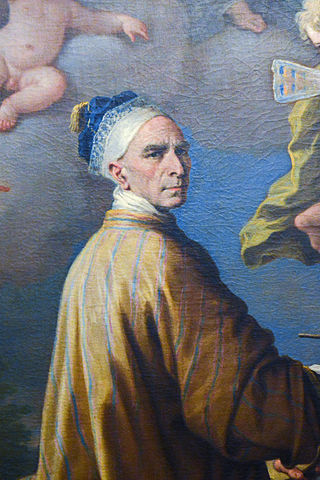
Paolo de Matteis was an Italian painter.
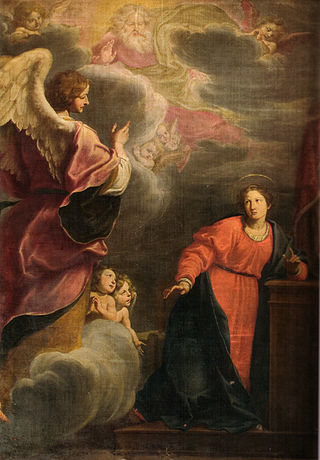
Fabrizio Boschi (1572–1642) was an Italian painter of the early-Baroque period, active in Florence.
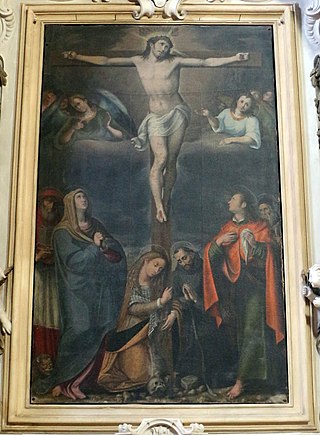
Felice Damiani or Felice da Gubbio (1530-1608) was an Italian painter of the late-Renaissance or Mannerism period.
Giacomo Rocca was an Italian painter of the late Renaissance or Mannerist period. He was a pupil of Daniele da Volterra, and aided in completion of frescoes for the first chapel on the right of Santa Maria degli Angeli in Rome. Rocca's biography is sketched in Giovanni Baglione's Le vite de' pittori, scultori et architetti dal pontificato di Gregorio XIII del 1572 in fino a tempi di Papa Urbano VIII nel 1642.
Raffaello Vanni was an Italian painter of the Baroque.

Cecchino Bracci was a pupil of Michelangelo. He died at the age of sixteen and is buried in Santa Maria in Aracoeli, in a tomb designed by Michelangelo.
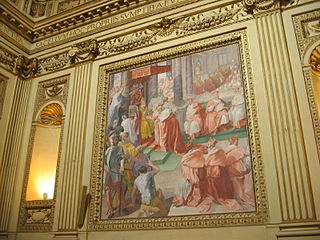
Pasquale Cati was an Italian Mannerist painter active mostly in Rome.

















